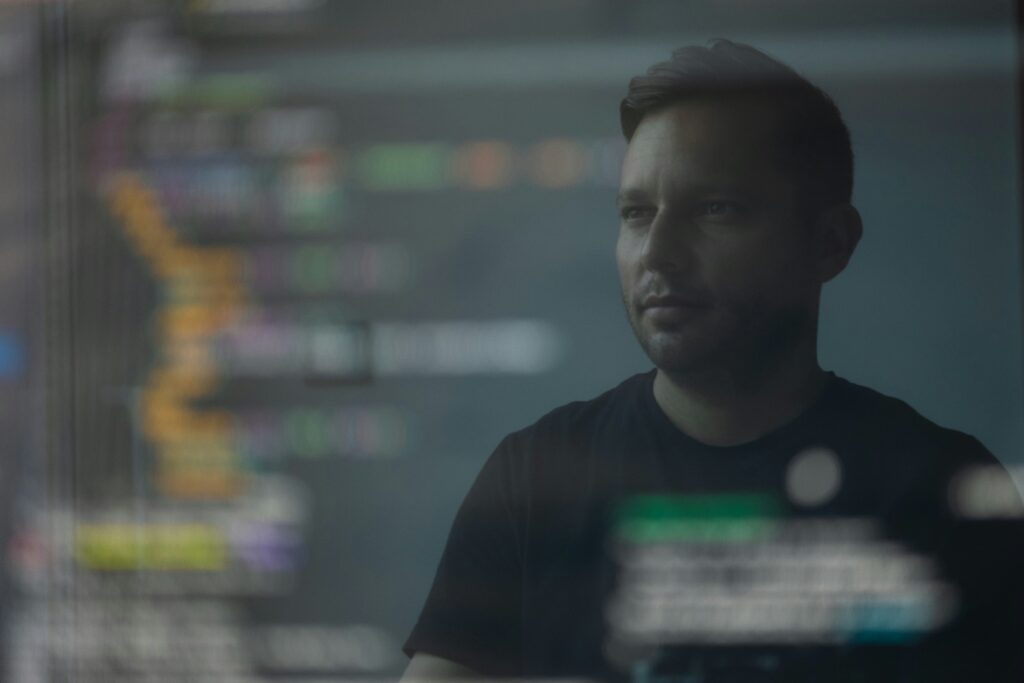Front-End vs Back-End Development is quite possibly the most important choice while starting a career in programming. For the majority of the fresh entrants into the world of IT, the choice will never be simple, more so since both initially seem very attractive. Yet, understanding how both these areas are distinct from one another will allow you to make a better decision based on your interests, aptitude, and dreams.
What is Front-End and Back-End development?
- Front-End is the “face” of your website or web application. It’s what the user will see: interface, design elements, interaction with the site. Frontend developer is responsible for creating visual and interactive aspects of the application that provide a user-friendly experience.
- Back-End is the “heart” of the application. It is the server side which processes the user requests, interacts with databases and performs the logic behind the interface. The backend developer builds an architecture that enables stable application operation.

Why Is It Important to Choose?
- Career development. You will know where you’re going and direct you to choose the right tools, technologies and learning courses. To be a master in a specific area requires deep knowledge and time, and the sooner you decide, the more proficient you’ll be.
- Selection of suitable projects. There are various types of developments, and based on what you want to do, you have various alternatives. If you want to create nice interfaces with user interactions, then frontend will be your alternative. If you prefer to handle logic, database and server side, then backend will be the best solution.
- Future specialization. Specialization in the development world is still increasing. It is important to notice what type of work you would like to perform and where you can make the most improvement.
Main Differences Between Front-End and Back-End Development
Celadonsoft: “When deciding on Front-End vs Back-End development comparison, it is necessary to realize what each of these experts does, what is solved in these positions, and what skills are needed for this.”
What Does a Frontend Developer Do?
The frontend developer is engaged in the creation of what the user sees and works with. It works with those things which are located on the «front» side of web applications, all the visual things and interfaces. Main work of frontend-developer:
- Interface development. This means the creation of user pages, buttons, forms, animations and everything that gives the ability to interact with the site or application.
- Optimization of the user experience (UX). Not only how it looks, but also how simple it is to use. Frontend-developers are directly involved with design prototypes and improving user interaction with interfaces.
- Supports JavaScript and frameworks. Frontend developers’ most valuable tool is JavaScript, which is employed for dynamically updating content and communication with the server. Libraries and frameworks like React, Vue or Angular make the development process significantly easier.
- Flexibility and cross-browsing. A significant endeavor is to develop sites that will function just as well on various devices and in other browsers.
What Does the Backend Do?
A backend developer works behind the scenes, writing server part of programs. It does everything that cannot be observed but is required for website work. Main tasks of backend-developer:
- Work with databases. Backend developers create and maintain databases where all data are saved, from user information to transactional data.
- Server logic development. API (front-end interaction interfaces with the server) development, front-end requests and business logic handling. Back-end developers write server-side code that takes care of all the logic concerning storing data as well as data processing.
- Scalability and performance. The server-side of the application must be able to serve lots of users, requests and data. Backend developers make server stable and fast.
- Security and authorization. Working with data security, authorization system development, data encryption and protection against attacks is a primary task for backup-developer.
What Front-End vs Back-End Development Use in Technologies and Tools?
- Frontend: The major frontend technologies and tools are HTML, CSS, JavaScript and libraries and frameworks such as React, Vue, Angular, SASS, Bootstrap and so forth.
- Backend: Backend uses programming languages such as Python, Java, Node.js, Ruby and PHP. Developers also work with frameworks such as Django (Python), Express (Node.js) and Spring (Java), and databases (SQL and NoSQL).
What Are the Knowledge and Skills Required in Order to Excel in Front-End and Back-End Programming?
Front-End Developer’s Skills and Knowledge
In order to be a successful frontend developer, you need a certain skill set focused on creating the aesthetic side of web applications. The most important thing is as follows:
- Web technologies fundamentals – HTML, CSS and JavaScript. Knowledge of them is the core of frontend development. Without them, it is impossible to create even the most banal website.
- Frameworks and libraries – in 2025 knowledge of such libraries as React, Vue.js, Angular, significantly increases the demand for frontend-developer. Such libraries simplify the work with user interfaces.
- Adaptive design – the ability to design interfaces that are visually appealing on any device and screen resolution.
- Build and test tools – Webpack, Babel, ESLint and more, and test tools like Jest help simplify the development process and code stability.
- Mastery of basic UX/UI principles – understanding of usability and interface beauty guarantees that products are not just useful, but also user-friendly.
Backend Developer Skills and Knowledge
Backend developer works with the server side of the application and is tasked with data processing, database storage and frontend interaction. The bare minimum knowledge one needs to excel in this field is:
- Backend programming languages – Python, Java, Ruby, PHP, Node.js, Go – are among the most popular backend programming languages. It is essential to learn at least one of them.
- Database development – familiarization with SQL (e.g., MySQL, PostgreSQL) and NoSQL (e.g., MongoDB) database work to handle and process data.
- API and microservices – understanding how RESTful APIs are built, use of GraphQL, building and hosting a microservice architecture.
- Version control systems – the ability to work with Git and GitHub/Bitbucket is an important factor in command development.
- Deployment tools and platforms – understanding Docker, Kubernetes, CI/CD and cloud technologies such as AWS, Google Cloud, Azure is important for application deployment and scaling.
How to Choose the Right Path According to Your Projects and Future Career?
If You Are a Beginner
In case you’re just starting on your development path, choosing if you should specialize in frontend or backend development could be tough. It’s useful to remember that both paths require good foundation-level knowledge in programming and familiarity with the operational principles of web applications.
Frontend is for people interested in the graphics part of development, interfaces and user interaction. If you like coding with a focus on design and creating interfaces beautiful and pleasant, this is your choice.
Backend is better suited for those interested in application logic, databases, security, and scaling. If you are keen on creating «behind the scenes» application architecture, backend will be your path.
For Professionals
If you are a professional developer already, and you need to choose a path for your development, consider the following:
- Requirements: for intricate web applications that demand strong logic and integration of various services, backend development very often is not an afterthought. If a project is planned to user interface and interaction, frontend is given priority.
- Hybrid skills: for individuals with experience in both frontend and backend (Full-Stack), there’s increasing demand for them. Being able to work on both sides of the application allows you to develop quicker and provides opportunities for further development in your career.
Future Forecasts: Is There a Boundary Between Front-End and Back-End Erasure?
Technological Progress and the Need for Collaboration
As technology progresses, frontend and backend boundaries are becoming increasingly blurred. Modern tools and frameworks allow us to unify frontend and backend on the scale of one code base. Examples of such technologies:
- Serverless architecture – an approach that simplifies the creation of server solutions, allowing developers to focus on application logic rather than infrastructure.
- GraphQL – a general query language that can be used for both frontend and backend for data handling with more flexibility.
- Server-Side Rendering (SSR) – libraries that allow rendering pages on the server, simplifying frontend interaction with backend.

Full-Stack Development Arises
As Full-Stack development has become increasingly popular, more and more professionals are looking to develop in both directions, learning to be proficient in both frontend and backend. It makes you flexible, capable of doing different things in the project, in addition to having greater possibilities for your career. By 2025, Full-Stack developers will be required even more since companies are looking to create more integrated solutions.
Conclusion: What to Do and How to Make a Decision?
Celadonsoft: “Lastly, frontend or backend depends on your interest and goals. Both have promising career paths and require continuous training.” To determine the correct one:
- Determine your interests: if you like to create interfaces and work with the user, your choice is frontend. If you prefer logic and architecture, choose backend.
- Try both ways: by starting to learn one, you can always get used to the other. Thus, you’ll be aware of what really suits you.



